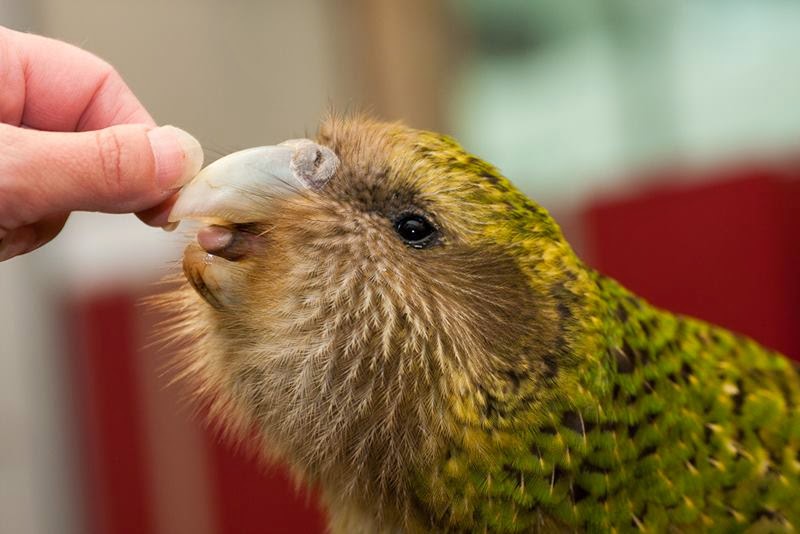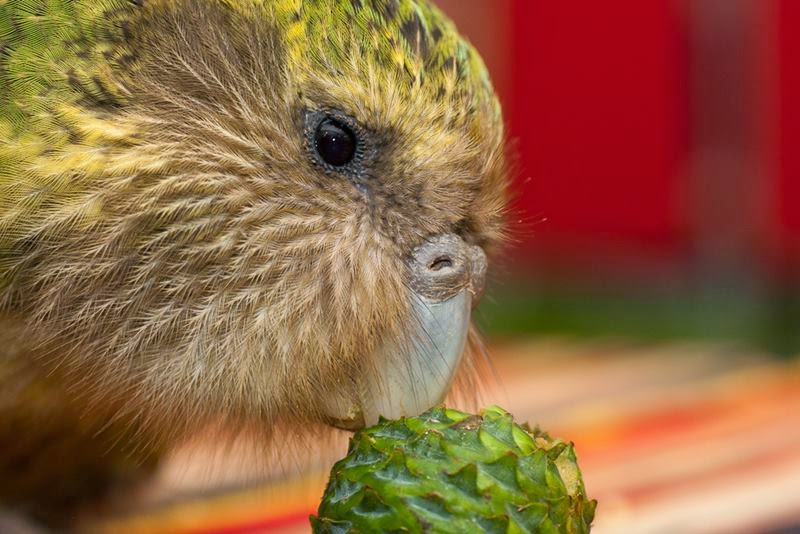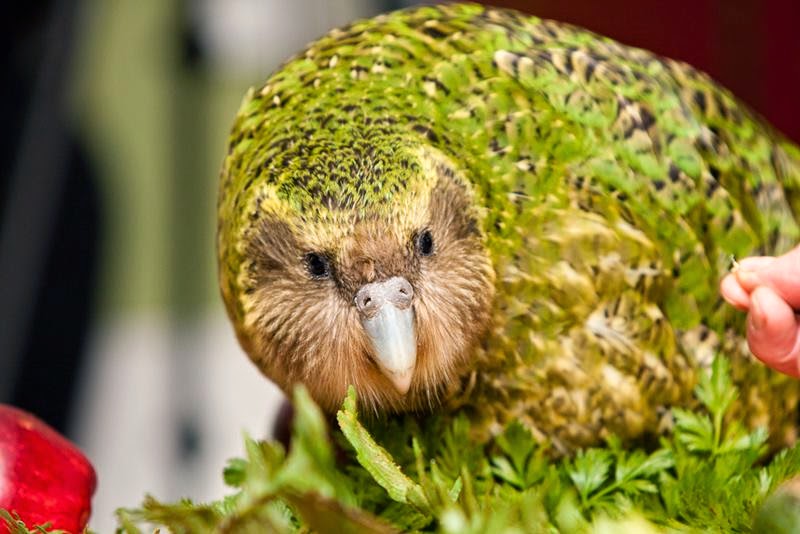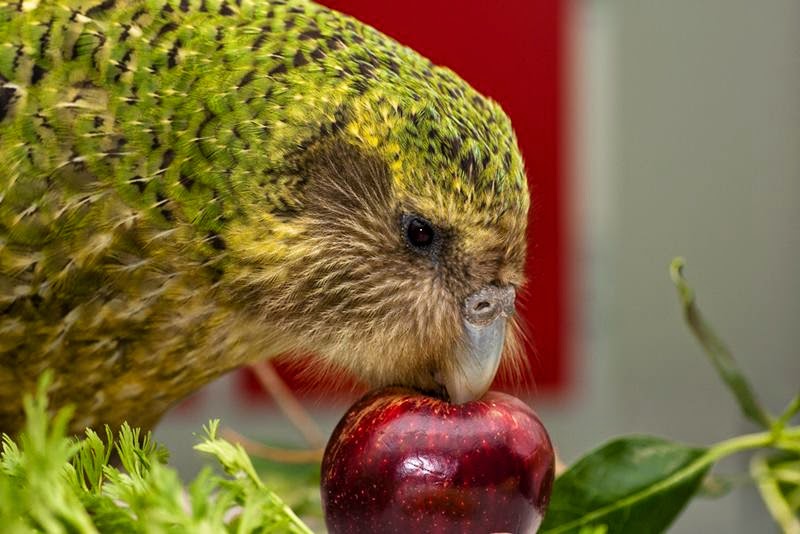Kakapo parrot also called owl parrot, Maori: Kakapo, night parrot, Strigops habroptilus, is a species of large, flightless parrot, nocturnal, ground-dwelling parrot of the super-family Strigopoidea endemic to New Zealand. Kakapo size at length, kakapo reaches 60 cm, has very soft feathers (see the 8th photo), greenish-yellow in the abdomen and moss-green with black stripes on the back, and the heaviest in the world, weighing up to 3.5 kilograms or 8 lbs.
 |
| Kakapo |
Owl Parrot
The name owl parrot got for what plumage front part of the head is similar to the owl as feathers in this place a disk image. Kakapo voice like a hoarse croak, sometimes turning into squeals. These parrots can not fly and can only plan; covering the air distance is only 20-30 meters. So naturally, kakapo parrot mostly lives on land, hiding in burrows during the day and evening and out searching for food at night. Owl parrots - vegetarians eat berries and juice plants.
Kākāpō, the night parrot, was originally described by English ornithologist George Robert Gray in 1845. Its generic name is derived from the Ancient Greek Strix, genitive strigose "owl", and ops "face", while its specific epithet comes from habros "soft", and ptilon "feather". It has so many unusual features that it was initially placed in its tribe, Strigopini. Recent phylogenetic studies have confirmed the unique position of this genus as well as the closeness to the Kaka and the Kea, both belonging to the New Zealand flightless parrot genus Nestor.
Together, they are now considered a separate family within the parrots, Strigopidae. Within the Strigopidae, the kakapo is placed in its tribe, Strigopini. The common ancestor of the kakapo bird and the genus Nestor became isolated from the remaining parrot species when New Zealand broke off from Gondwana around 82 million years ago. Approximately 70 million years ago, the kakapo birds diverged from the genus Nestor. [Face Book]
First Image credit Oliver Seiler
 |
| Kakapo parrot |
Image credit Oliver Seiler
Flightless parrot of New Zealand
The flightless New Zealand parrot live in island country that had virtually no mammals living on it for millions of years. It was a place inhabited by birds and reptiles. The only types of mammal were two species of bats. The Kakapo bird New Zealand, did not learn the defence mechanisms to combat or escape mammalian predators. Kakapo scientific name is Strigops habroptilus. This made the parrot owl very vulnerable when new animals started showing up. The arrival of Polynesian peoples thousands of years ago, of Europeans in the 1800s, and ultimately the pets and livestock they brought with them resulted in the massive decline of Kakapo populations from hundreds of thousands to a mere handful of birds.
 |
| Flightless parrot |
Image credit Oliver Seiler
The flightless parrot of New Zealand Kakapo builds nests in crevices of rocks or rotten stumps of old trees. In January-February, the females lay two eggs. They are an endangered species currently listed in the Red Book. The development of the islands of New Zealand was brought new predators - cats and rats, which were significant enemies of owl parrots. New Zealand Aluminium Smelter (NZAS) has sponsored the kakapo recovery program since 1990. Scientific research and operational support have provided a stronger foundation for the recovery of kakapo, one of the world's rarest parrots owl. Once common throughout the three main islands of New Zealand, there are now approximately 62 Kakapo left. These remaining birds have been relocated to six predator-free island habitats, where the birds are relatively safe and have been breeding!
 |
| Owl parrot |
Image credit Oliver Seiler
 |
| Parrot owl |
Image credit Oliver Seiler
 |
| New Zealand Kakapo |
Image credit Oliver Seiler
 |
| Flightless New Zealand Bird |
Image credit Oliver Seiler
 |
| New Zealand flightless parrot |
Image credit Oliver Seiler
 |
| Flightless parrot in new zealand |
Image credit Oliver Seiler
 |
| Flightless New Zealand parrot |
Image credit Oliver Seiler
Kakapo: Flightless Parrot | Benedict Cumberbatch | BBC Earth — Video
 |
| Strigops habroptilus |
Image credit Oliver Seiler

No comments:
Post a Comment